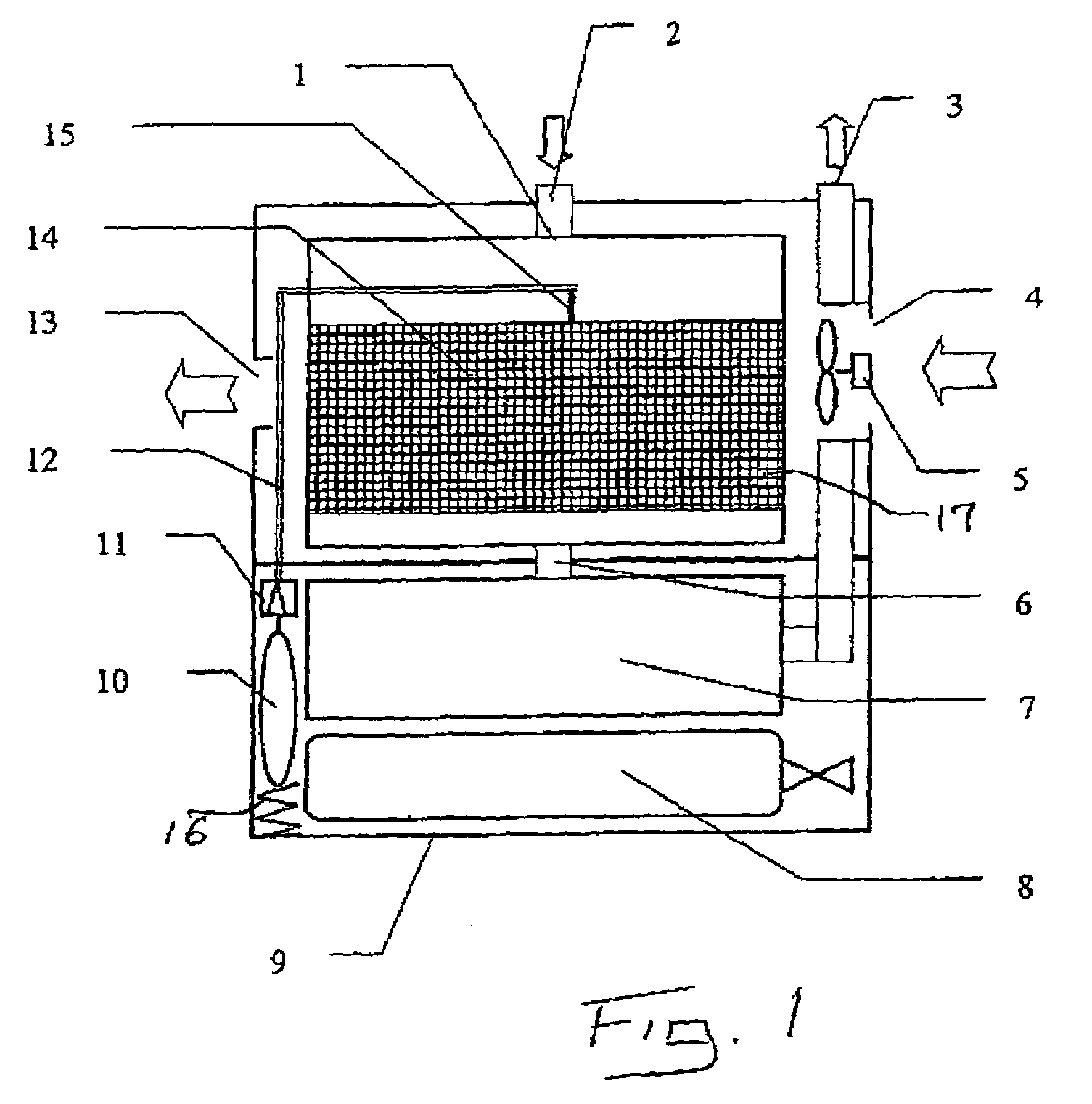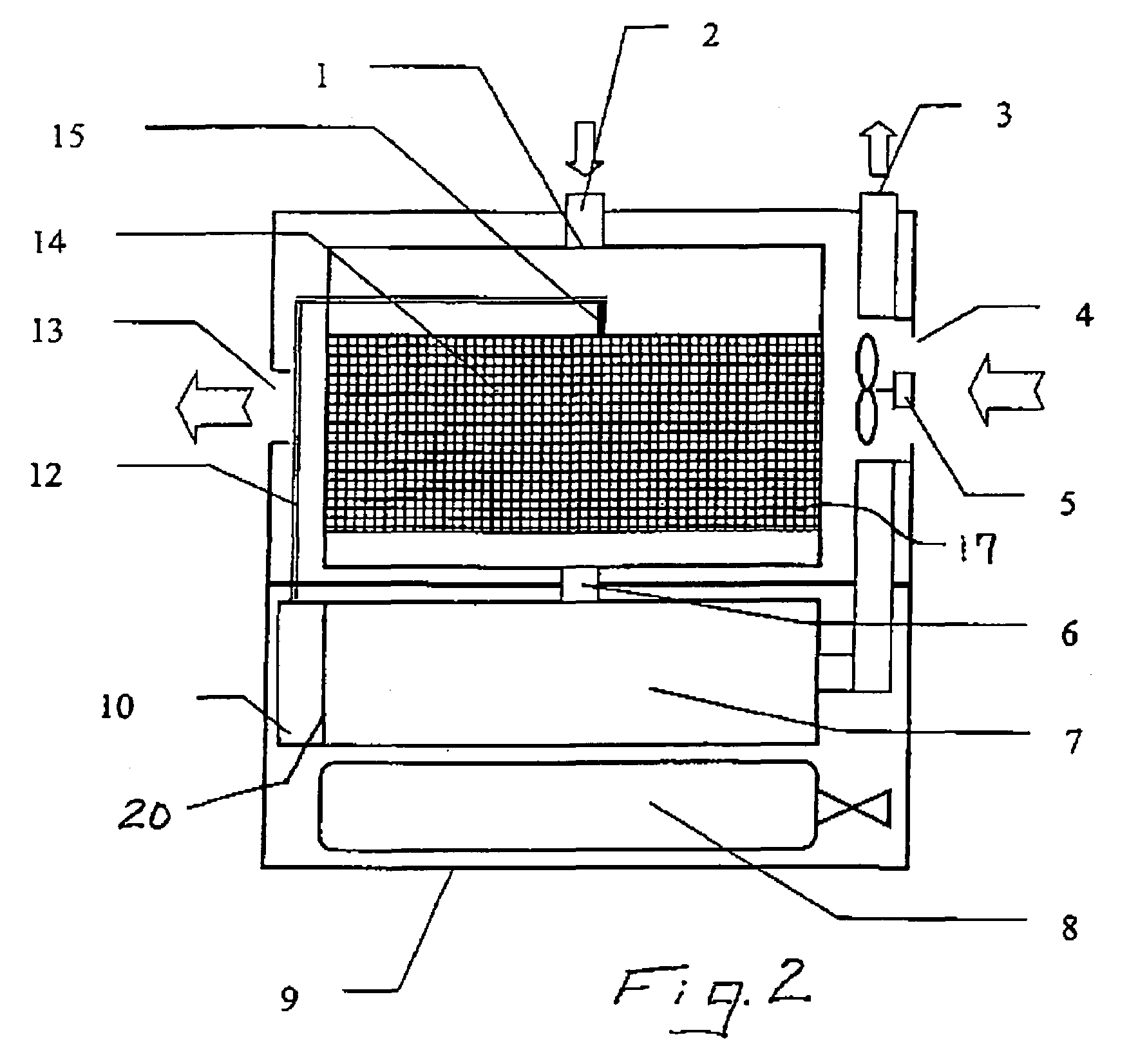Breathing equipment with a circuit for breathing gas
- Summary
- Abstract
- Description
- Claims
- Application Information
AI Technical Summary
Benefits of technology
Problems solved by technology
Method used
Image
Examples
Embodiment Construction
[0031]Referring to the drawings in particular, FIGS. 1, 2 and 3 show three embodiments of breathing equipment with a circuit for breathing gas according to the invention. In each of these embodiments a calcium hydroxide absorber 1 is located in a breathing device housing or breathing equipment housing 9. The expired air of the user of the breathing equipment is released via tubes and the inlet 2 into the calcium hydroxide absorber 1. The user of the breathing equipment again breathes from the breathing equipment via tubes via the outlet 3. The user breathes in directly from the breathing bag 7, which is connected to the calcium hydroxide absorber 1 via a gas connection line 6. The circuit for breathing gas is now closed. A first opening 4 in the breathing equipment housing 9 is arranged in each exemplary embodiment on the side, i.e., on the right in each figure, on which side an electrically driven fan is also arranged as a gas delivery means 5, which draws in air from the environme...
PUM
 Login to View More
Login to View More Abstract
Description
Claims
Application Information
 Login to View More
Login to View More - R&D
- Intellectual Property
- Life Sciences
- Materials
- Tech Scout
- Unparalleled Data Quality
- Higher Quality Content
- 60% Fewer Hallucinations
Browse by: Latest US Patents, China's latest patents, Technical Efficacy Thesaurus, Application Domain, Technology Topic, Popular Technical Reports.
© 2025 PatSnap. All rights reserved.Legal|Privacy policy|Modern Slavery Act Transparency Statement|Sitemap|About US| Contact US: help@patsnap.com



